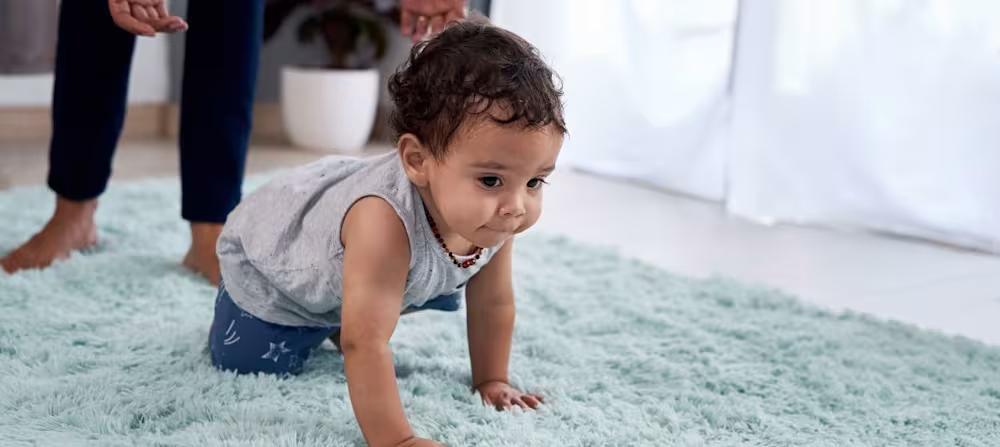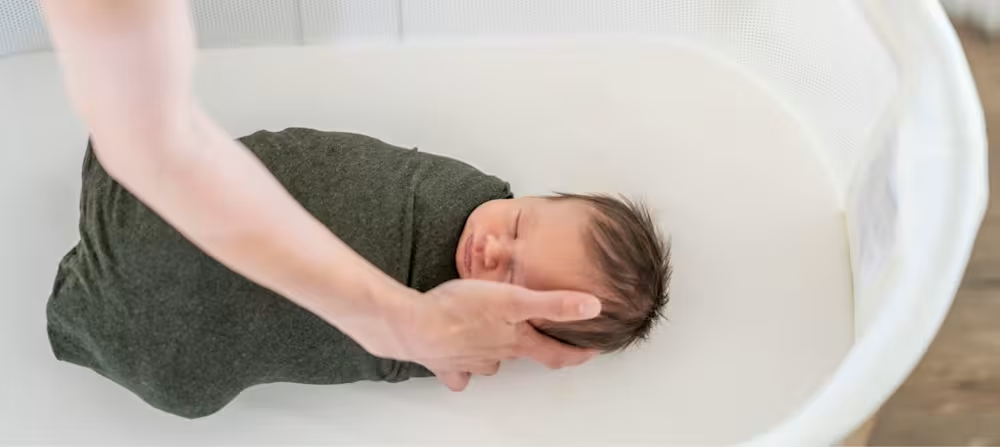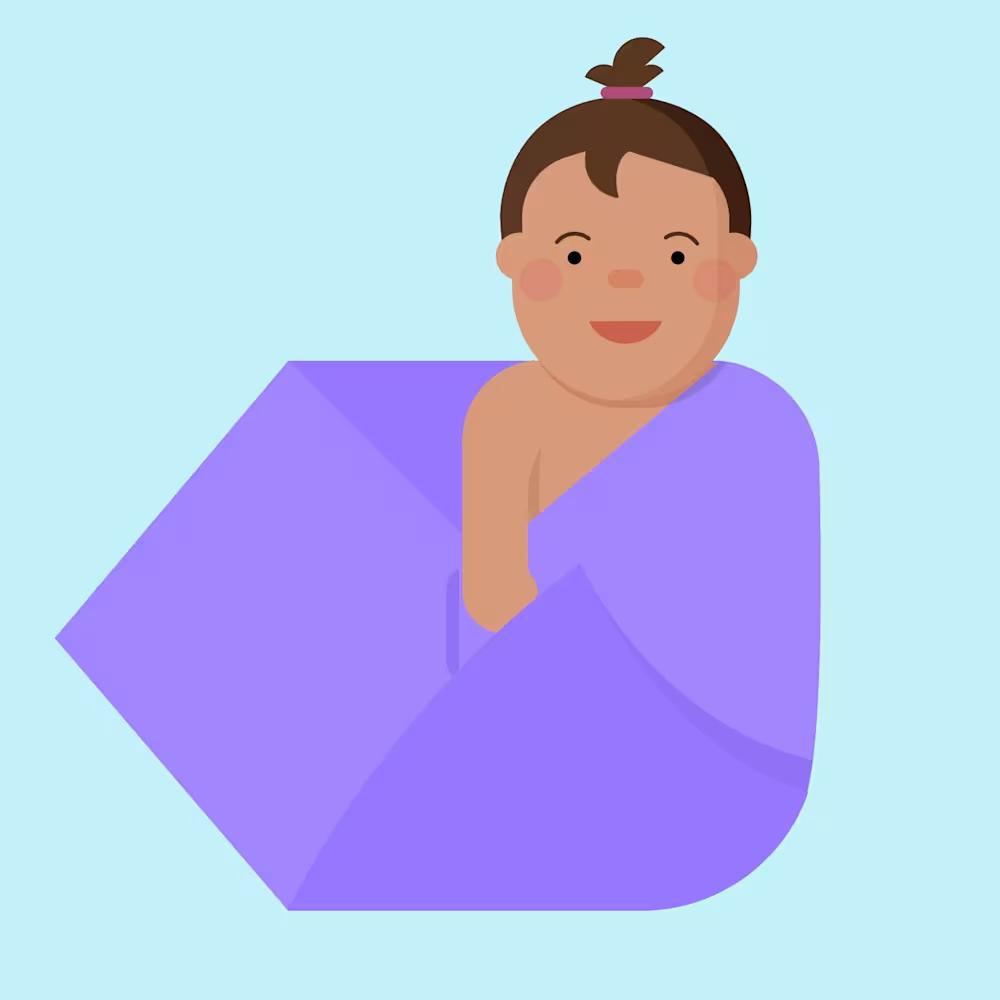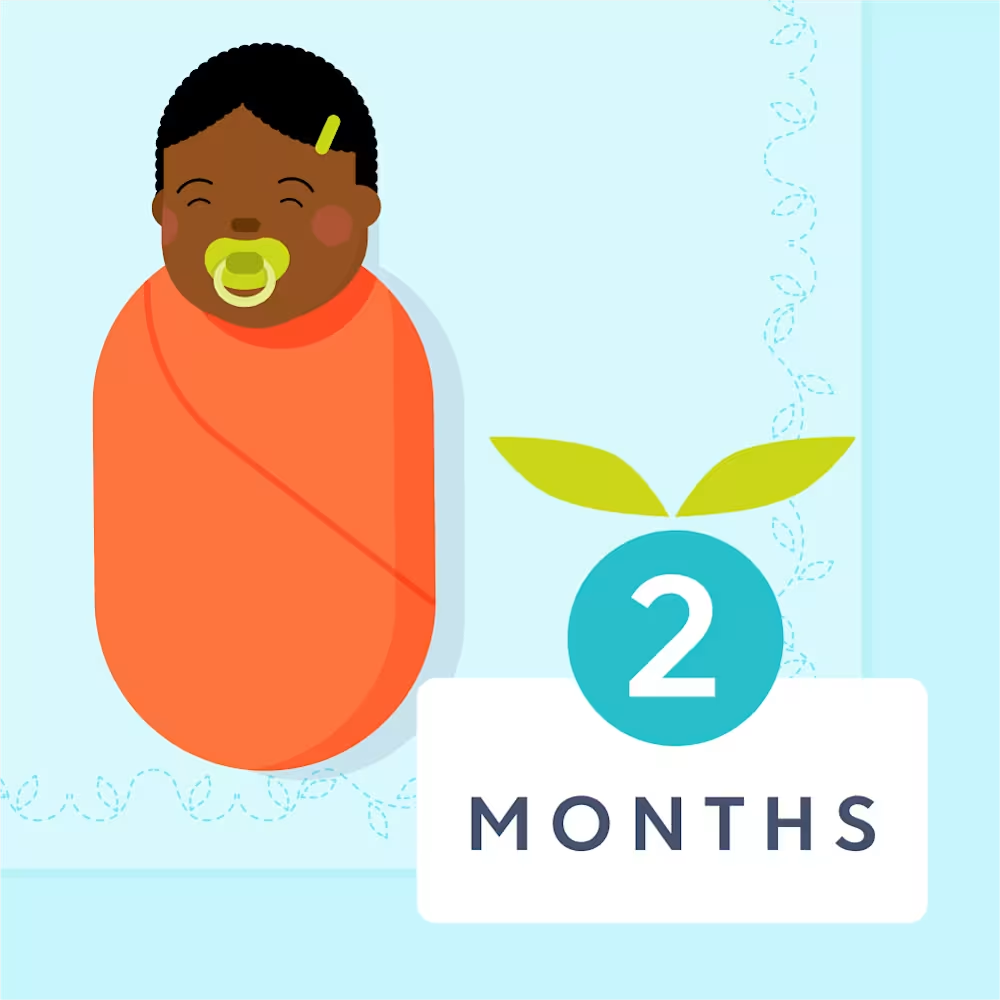When to stop swaddling baby: Transition out of swaddle
Updated Oct 16, 2025

Need to say goodbye to the swaddle? The time comes when all babies have to transition to being swaddle free and having their arms available for safe sleep. This transition often goes well, but in this article, we’ll cover some strategies for when you want to prepare in advance for this move, or if your baby needs a little more help to adjust.
When to stop swaddling newborn
Most babies will transition out of the swaddle around 2 - 3 months of age []. Some babies transition just fine, however, others need a bit more help moving away and being arms-free.
As newborns get older, they may naturally start breaking free or resisting their swaddle. Some babies, albeit still , will start to show signs of rolling and will need their arms free for safety reasons.
How long do you swaddle a baby
Swaddling can be helpful from newborn age up to around 2 - 3 months. During this time, it supports better sleep by:
Reducing wakings due to the Moro reflex []. This reflex causes your baby to quickly extend their arms and legs out as if they’re falling. It can cause them to suddenly wake, and may even cause them to become upset.
Limits movement: Swaddling helps to keep the arms and legs from extending and can reduce the startle.
Creates a sense of security: Mimics the coziness and safety of the womb, helping babies feel more settled.
However, once your little one starts to show signs of rolling over or starting to resist, it may be time to transition out of the swaddle.
Best way to transition your baby out of swaddle
Ideally, you’d work on practicing this new way of sleeping before your baby starts to show signs of rolling and you need to move from swaddling arms for safety purposes. That gives lots of time to play with and you can gradually move away from the full swaddle little by little over a couple of weeks. Taking your time may also help to reduce any anxiety you have about making changes to sleep routines!
First, we suggest starting with nights, then moving to naps. The transition could look like this:
Method 1: Cold turkey
Go cold turkey! This may be suitable for families who have calm, settled babies who don’t spend periods of time fussing or get overtired easily. You can always try this arms-free method and if your little one gets upset, settle them with your usual settling technique such as patting if required. If you’ve given it a go and found it too challenging, then try method 2 or 3 below.
Method 2: Remove one arm at first
Unswaddle baby's one arm for a few days (word of caution: follow your manufacturers’ recommendations, some swaddles don’t allow for one arm out). Then you can stop swaddling arms, leaving just the legs swaddled. Finally, remove the entire swaddle. Then, work on naps.
Method 3: Wean swaddles at bedtime first
If you’re still struggling with the Moro reflex waking your baby: remove the swaddle (or part of the swaddle) at bedtime only to start. Re-swaddle on their first night waking. If your baby gets upset, use your usual method such as patting, cuddling, or rocking to help calm them down. This can help make the process more manageable by limiting overtiredness, which is sometimes inevitable during a transition like this.
Moving to naps
When bedtime becomes a bit easier, you can stop swaddling when your baby wakes up during the night.
Now, move to naps. You can start with the first nap of the day to get them used to the new way of sleeping and then move on to the other naps, or if your baby has done well up to this point, transition them to being swaddle free straight away.
Editor's note
If you’re taking a gradual approach and your baby starts showing signs of rolling during the process then we need to remove the swaddle completely. This doesn’t mean your baby will get upset straight away and some babies transition really well. You may experience a bit of temporary disruption to your baby’s sleep as they get used to having their arms lose. However, their hands are now free to suck on, and new soothing strategies may emerge.
Signs to transition your baby out of the swaddle
Signs it's time to ditch the swaddle include:
Moro reflex lessens
Baby starts resisting the swaddle
Baby starts rolling
We'll explain more below:
Sign #1: Moro reflexes
You may notice your baby doesn’t startle in the same way, as the Moro reflex lessens over the first few months of life. If it’s not causing wakings, or they jerk but aren’t awoken fully, then you can start to transition to being swaddle free.
Sign #2: Baby starts resisting the swaddle
You may also notice that your child may start resisting their swaddle or breaking free. This is a good sign they’re ready for change.
Sign #3: Baby starts rolling
If your baby shows signs that they’re starting to roll then it’s time to transition straight away. They may be lifting their upper body more, or rolling onto their shoulders and reaching out. Your little one’s lower body may also show more signs of strength and their hips start to twist. If this is the case, we need to immediately remove the swaddle to help keep your kiddo safe.
8 Tips and tricks for transitioning baby out of swaddle
Here are some tips for transitioning out of the swaddle:
Plan ahead
Start with bedtime first
Try one arm out
Start with the first nap of the day
Prepare for a transition period
Consider a transitional product
Go cold turkey!
Avoid weighted swaddles and other items
Find more info below:
Tip #1: Plan ahead
Plan ahead for the swaddle transition so you have time to introduce gradual changes before your baby starts to show signs of rolling.
Tip #2: Start with bedtime first
Start with bedtime first, typically this is when there’s the most sleep pressure, and it will be easier for your baby to fall asleep with changes to their usual patterns or routines.
Tip #3: Try one arm out
If your swaddle allows, try for one arm out at first before transitioning to both arms out. Remember to check the manufacturers’ recommendations.
Tip #4: Start with the first nap of the day
For naps, start with the first nap of the day and then progress to transitioning out of the swaddle for others.
Tip #5: Prepare for a transition period
Prepare for a transition period. It may (or may not!) have an impact on sleep. Persevere through this time as your baby learns new settling methods.
Tip #6: Consider a transitional product
There are many transitional products out there — such as the Magic Merlin Sleepsuit and Zipadee-Zip — that are safe for babies with more mobility and still offer similar comfort to a swaddle. Traditional sleep sacks are great too. In general, transitioning from a swaddle to can provide a similar sense of security and coziness.
Tip #7: Go cold turkey!
If your baby is generally calm and settled in their sleep you may want to consider going cold turkey and just stopping the swaddle. Many babies will adjust better than we think.
Tip #8: Avoid weighted swaddles and other items
The American Academy of Pediatrics (AAP) does not recommend [] weighted swaddles and other weighted items. If you use one of these products then transition to a non-weighted swaddle or to being swaddle-free.
How to get baby sleep without swaddling
There are many things to consider when trying to your little one to sleep without swaddling. Here is a list of things to try:
Solidify a for your baby.
Take a look at their .
Give a massage to your little one - it can be calming.
Consider a .
Make sure your baby is .
Takeaway
Most babies will transition out of the swaddle around 2 - 3 months, when they first show signs of rolling. They may also naturally start breaking free or resisting their swaddle.
Ideally, parents work on practicing sleeping without a swaddle before their baby shows signs of rolling. We suggest starting with nights then moving to naps. A full transition to sleep without the swaddle can happen all at once, with one arm out for a few days, or by using a gradual method and removing the swaddle at bedtime first.
Signs it's time to ditch the swaddle include: Moro reflex lessens, baby starts resisting the swaddle, or baby shows signs of rolling (or starts rolling).
Tips for transitioning out of the swaddle include prepare for a transition, consider a transitional product, go cold turkey, and avoid weighted swaddles and other items. Also consider making a transition from swaddle to sleep sack along with baby massage.
Swaddle FAQ
Share article:
Note: The content on this site is for informational purposes only and should not replace medical advice from your doctor, pediatrician, or medical professional. If you have questions or concerns, you should contact a medical professional.
3 Sources
Share article:









